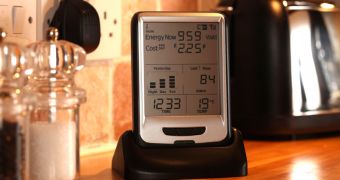Google’s ‘green’ arm has been particularly active lately and the company has been making several big moves in the energy sector. Now, through its philanthropic arm, Google.org, the company is announcing that it has partnered with the largest supplier of real-time energy use monitoring displays, Current Cost, to make its devices compatible with the Google PowerMeter.
“Having already sold one million energy monitoring devices, Current Cost will now offer devices that are compatible with Google PowerMeter. They will also offer upgrades to existing customers so that they too can monitor their energy consumption anywhere online with our software,” Scott Coleman, partnership development manager at Google.org, wrote.
The new devices from Current Cost will be available in North America, the United Kingdom, Australia and New Zealand at first and in other regions at a later date. Current Cost is now the third Featured Device partner for PowerMeter. The ‘title’ means that devices built by this company are compatible with the iGoogle widget, which enables users to monitor their energy use in real time.
Current Cost is already the largest such device manufacturer and another new partnership should help it maintain its position. The company has teamed up with E.ON UK, one of the largest utility providers in the country, and will offer Current Cost devices, which are compatible with PowerMeter, to its customers.
Google partnered with other hardware manufacturers in the past to create devices that worked with the PowerMeter gadget. Last year, it teamed up with TED (The Energy Detective) to offer customers a choice for monitoring their energy usage even if they didn’t have a smart meter installed. Now, thanks to the PowerMeter API, it can sign more partnerships with these device manufacturers.
On a larger front, Google has been recently granted permission to buy and sell electricity wholesale. This, the company says, will enable it to manage its consumption more flexibly and acquire more ‘green’ energy for its usage. The company also bought a $38.8-million stake in a wind-farm project, again, mostly for internal use.

 14 DAY TRIAL //
14 DAY TRIAL //